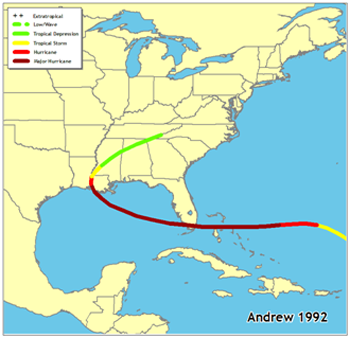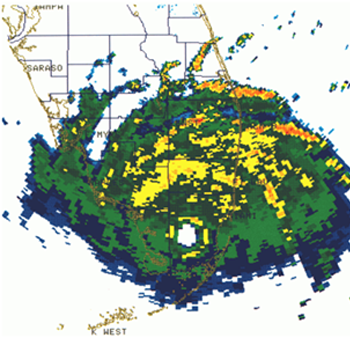
more than $26.5 billion worth of damage .
Andrew began as a tropical wave off the coast of Africa on August 14, 1992. By the 17th, Andrew had already strengthened to a tropical storm. Wind shear threatened to destroy Andrew before the storm gained strength between Bermuda and Puerto Rico. By the 23rd of August, Andrew reached a Category 4 hurricane. Hurricane Andrew began pummeling the southern tip of Florida on August 24. Several wind reports estimated the sustained winds to have been near 142 mph with gusts exceeding 177 mph. As the storm raged across the area, a central pressure of 27.23 inches, or 922 millibars, was recorded by a private barometer by a person who rode out the storm. In southern Florida, the storm surge exceeded 17 feet near the landfall point. Andrew eventually pushed out of Florida and into the Gulf of Mexico where it turned back to the northeast and made landfall again, this time in central Louisiana on August 26 as a Category 3 hurricane. In the United States, Andrew caused 23 deaths and more than $26.5 billion worth of damage. (information courtesy of NOAA)

|

|
